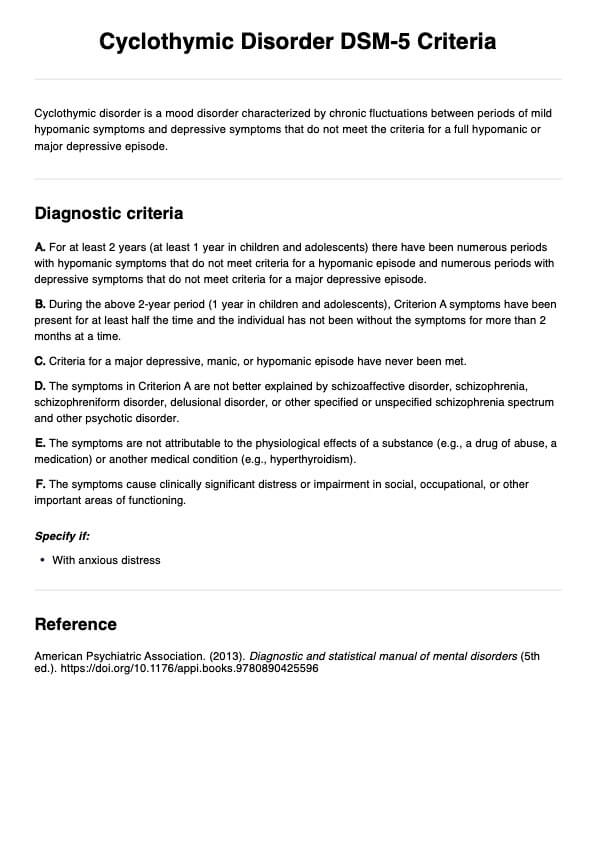Cyclothymic disorder is a mood disorder characterized by chronic fluctuations between periods of mild hypomanic symptoms and depressive signs that do not meet the criteria for a full hypomanic.

Cyclothymic Disorder DSM-5 Criteria
Learn more about cyclothymic disorder—a mood disorder with chronic mood swings between hypomanic and depressed mood. Explore treatment and symptoms.
Cyclothymic Disorder DSM-5 Criteria Template
Commonly asked questions
Diagnosis involves a thorough clinical evaluation, including a detailed history of mood symptoms, ruling out other mood ailments, and ensuring symptoms have been present for at least 2 years (1 year for children and adolescents) without a major depressive or manic episode.
Common symptoms include elevated mood, mood swings, and periods of depressed mood. These symptoms are less severe than those seen in full-blown hypomanic or depressive episodes.
EHR and practice management software
Get started for free
*No credit card required
Free
$0/usd
Unlimited clients
Telehealth
1GB of storage
Client portal text
Automated billing and online payments











